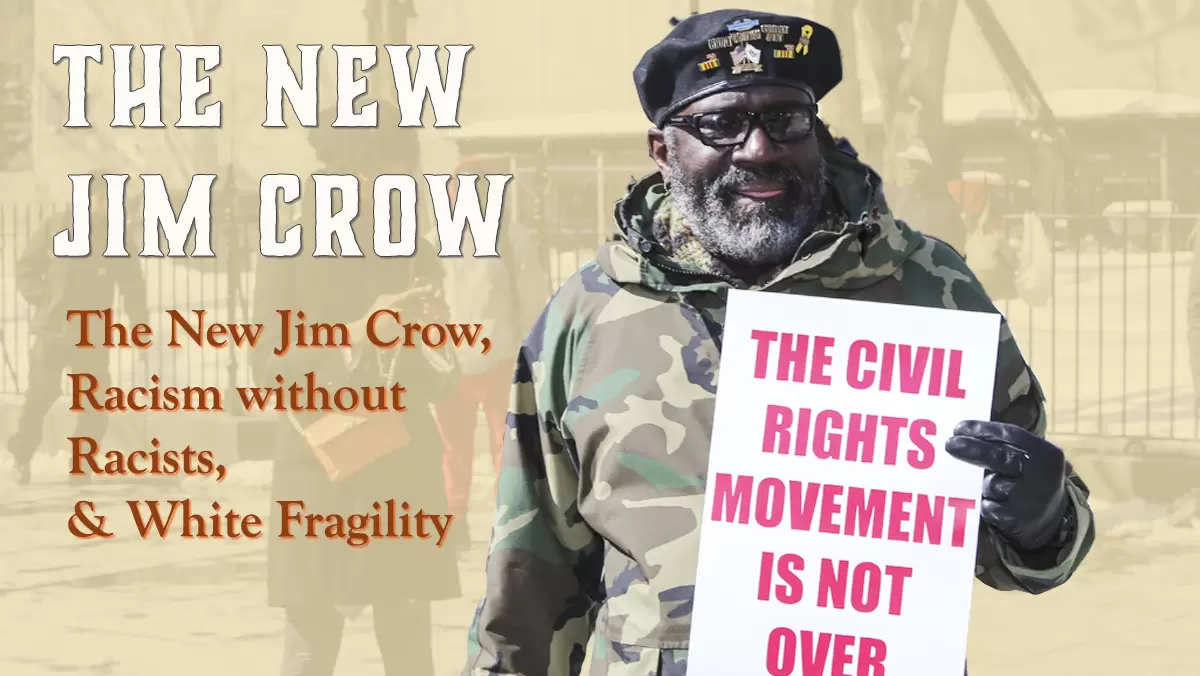
Recently, I’ve been consuming books* about race in the United States. The first of these, The New Jim Crow: Mass Incarceration In The Age Of Colorblindness by Michelle Alexander, took me down an enlightening path. Although I was familiar with the legal cases, events, and history discussed, the book crystallized how they were connected. The author’s perspective clearly expressed how our laws have functioned to ravage black Americans individually and collectively for decades.
Laws which explicitly embody racial discrimination have been generally illegal for roughly 50 years. The overwhelming effect of laws along racial lines has continued, nonetheless. The War on Drugs has led to an undeniably disproportionate impact on black people in America. This is true, despite illicit drug use and sales being roughly equivalent between black and white Americans.
The main takeaway from the book I get is racial differences in policing, prosecuting, and sentencing of black people over the course of decades has resulted in legalized racial discrimination. These factors have been enabled and emboldened by legislation and court decisions which created the framework of the “New Jim Crow”. The implementation of the nominally non-racial policies had a decidedly racial impact.
Legalized racial discrimination is palpable the moment a person is labeled “felon”, and this happens far more likely to black people than white people in America. Discriminating against a felon is perfectly legal in employment, housing, and many other areas of life. The right to vote has been stripped from felons, as well.
In effect, many of the racially discriminatory Jim Crow goals are successfully achieved using laws people call “color blind”. In fact, those “equal” laws are applied in a massively disproportionate manner against black people.
If you want to argue, check out the book and compare your position to the facts extolled in it.
This exceptional book led me to explore more articles and books. Namely, two books stood out for their own reasons: Racism without Racists: Color-Blind Racism and the Persistence of Racial Inequality in the United States by Eduardo Bonilla-Silva and White Fragility: Why It’s So Hard for White People to Talk About Racism by Robin DiAngelo. Both titles sounded provocative to me, and they each provided data and perspectives which were out of the norm for me.
Racism Without Racists provided extensive findings which are difficult to obtain, in my opinion. I’m used to seeing social data boiling down racial attitudes into statistics fitting neat categories. Instead, this book looked behind how white people discussed race and how what they said fit their actual realities.
White people routinely claim they “don’t see race”, they are “color blind”, both of which I find patently absurd because we all see race and are not color blind. Another common claim by white people is they have “black friends”.
Racism Without Racists takes the unusual approach of following up such claims with specific, pointed questions about how they live, how many black friends they have, and how often and extensively they interact with black people on a social level. Most often, the claims don’t hold up to scrutiny. Rather than buttressing their claims, real-world experiences demonstrate racial attitudes which aren’t “colorblind” at all, even if they fall short of hostile racism.
My main takeaway from Racism Without Racists is our self-image about our racial attitudes and beliefs is more aspirational and idealized than real. We seem to want racial harmony and equality, but we resist uncomfortable truths and every “boots on the ground” means of making those aspirations real life. To me, there’s a grain of hope in the book, despite the obvious failures we have experienced.
White Fragility addresses the white elephant in the room, that being the reluctance or even inability of white people to talk honestly and openly about race and racism. My experience has been similar to the author’s where our experiences overlap. The author’s job lays bare the topic in a keen way, however.
The author works in settings which elicit the very reactions demonstrating how uncomfortable white people are on the subject. She offers insight about the context and causes of discomfort for white people and why they lead to predictable and repeated behavior. Some of those behaviors directly undermine race relationships and interactions.
Awareness of issues interfering with communication is a first step toward adapting. The author provides keys to real-life attitude adjustments and tools for white people to be more comfortable and effective in resisting racial discrimination. Once we are aware of ourselves and our tendencies, we can better resist our tendencies which undermine racial dialogue.
In conclusion, I choose to discuss race in America and welcome learning more. I aspire to be more than simply not a racist, but to be anti-racist. I understand I must listen carefully to different perspectives, especially those as of yet unfamiliar to me. I expect to learn much more than I know now, and I expect some of my beliefs to be challenged and perhaps undermined completely. I resolve to be willing to change my actions and beliefs in accordance with what I learn. I chose to grow for my own betterment and my opportunity to improve society at large. I invite all people of goodwill to participate.
*Note: I read the paper version of White Fragility and listened to audio versions of The New Jim Crow and Racism Without Racists.
Tags: Criminal justice, poverty, drug addiction, racism, land of the free, War on Drugs, Race in America, Racist, Racists, Jim Crow, The New Jim Crow, New Jim Crow, White Fragility, Racism Without Racists, Michelle Alexander, Robin DiAngelo, Eduardo Bonilla-Silva, This Is Us, Drug War, black people, white people, United States history, Book Review, Book reviews